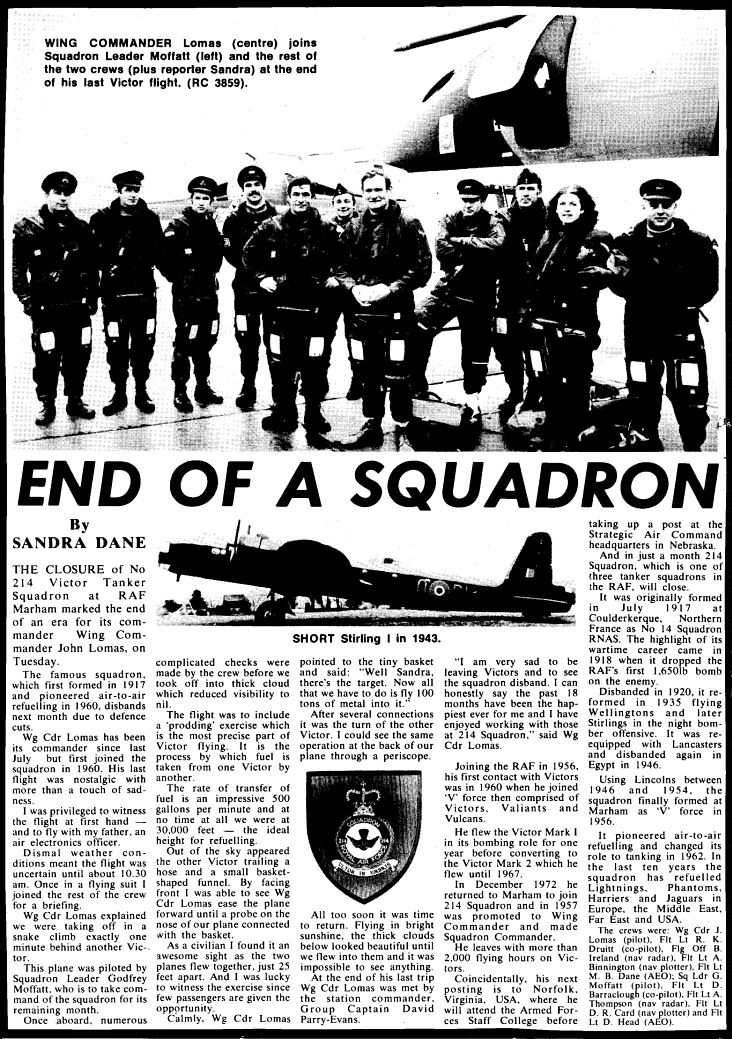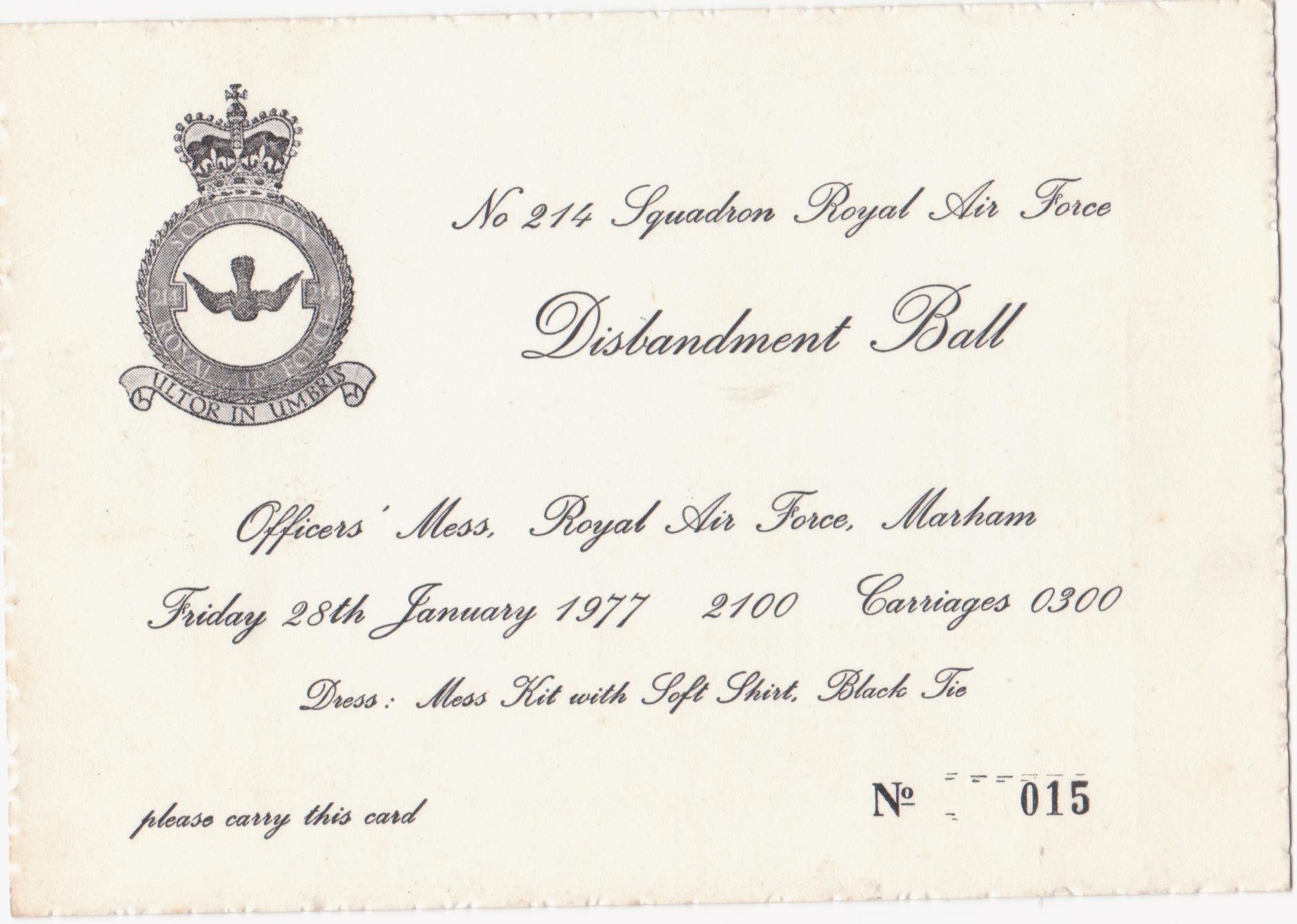Losses
Wellingtons - 1532 sorties 45 aircraft lost
Stirlings - 1432 sorties 54 aircraft lost
Fortresses - 1225 sorties 13 aircraft lost (13 obviously wrong, 17 identified to date)
Stirlings - 1432 sorties 54 aircraft lost (29 Stirlings lost in crashes)
Harrows - Unknown
No 214 Squadron flew a total of 4,189 sorties during which they lost 112 aircraft or 2.7%
No 214 Squadron suffered the highest percentage losses in 3 Group
Source : 'The Bomber Command War Diaries' by Martin Middlebrokk and Chris Everitt


 1977
1977

